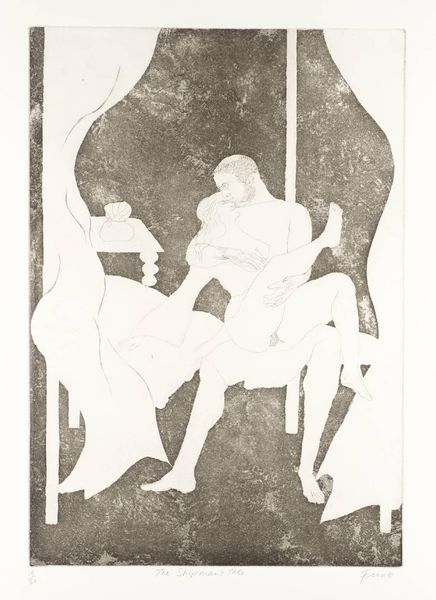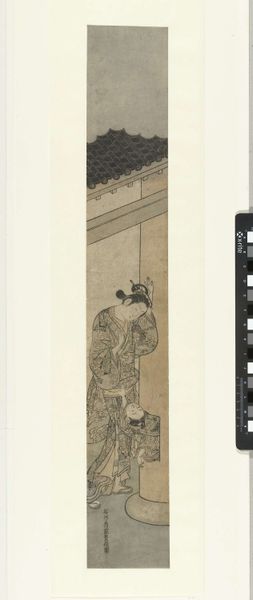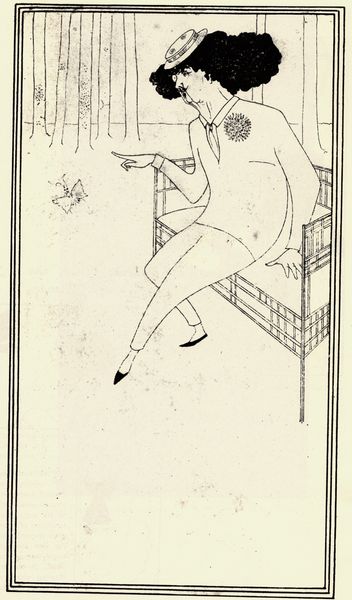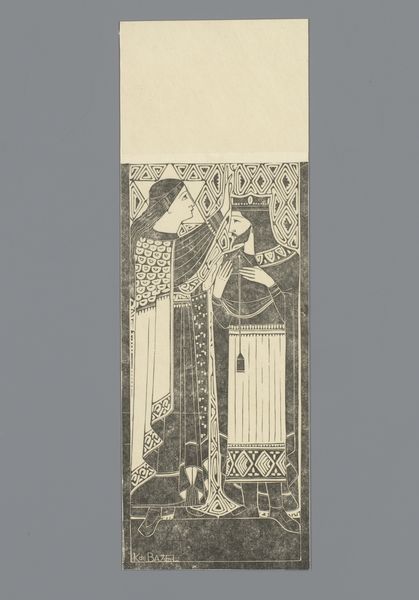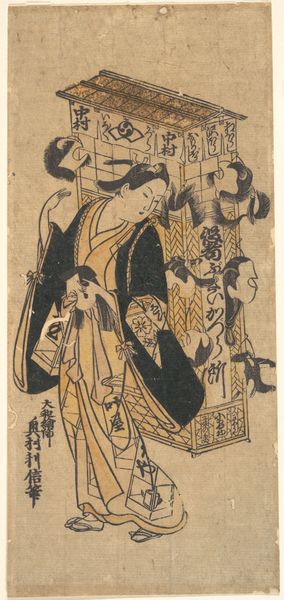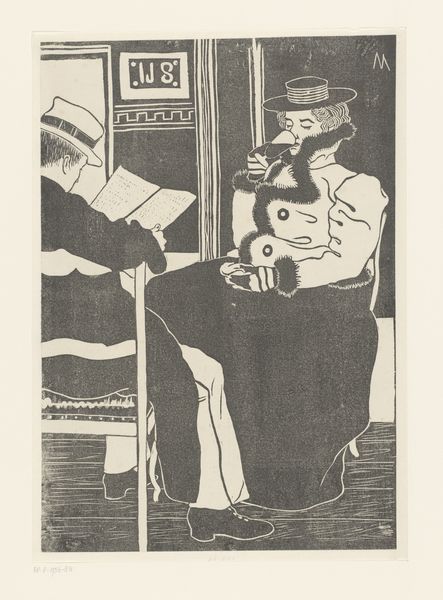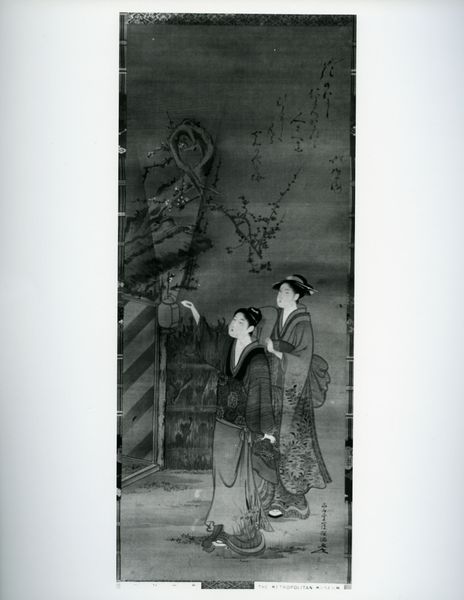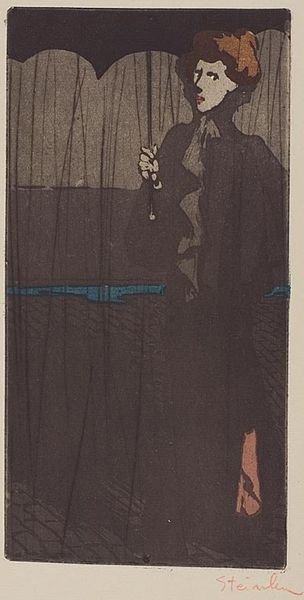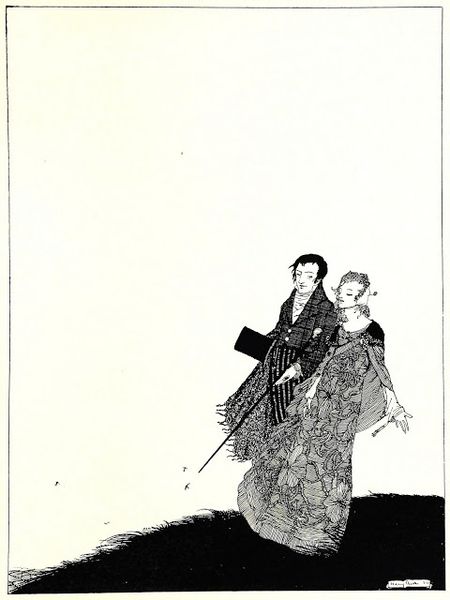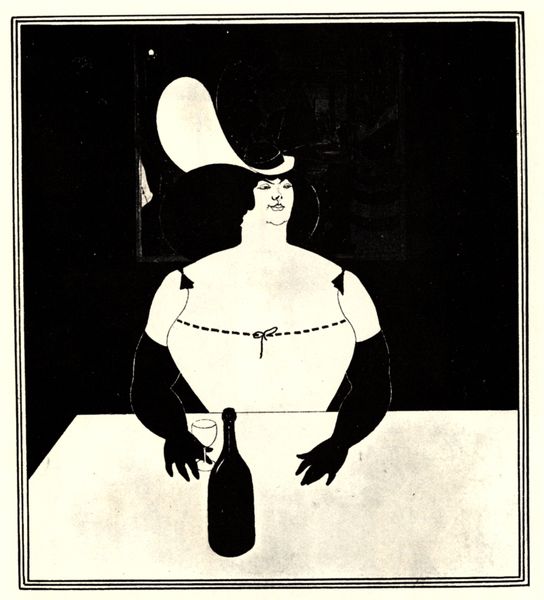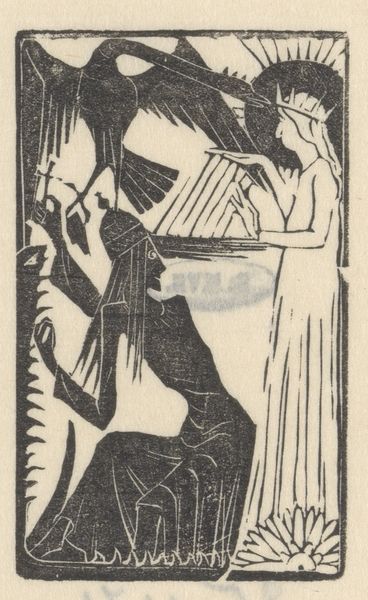
drawing, print, ink, woodcut
#
drawing
# print
#
pen illustration
#
old engraving style
#
figuration
#
ink line art
#
ink
#
woodcut
#
line
#
symbolism
#
nude
Dimensions: height 160 mm, width 60 mm
Copyright: Rijks Museum: Open Domain
Curator: What strikes me first is the somber, almost melancholic tone of this woodcut print. The sharp lines create a sense of stillness and quiet contemplation. Editor: And to give some background, what we’re looking at is Karel Petrus Cornelis de Bazel’s "Spring Thoughts," crafted in 1895. It’s an ink and woodcut print that seems deeply entrenched in the Symbolist movement, focusing on themes of figuration and the nude. Curator: Symbolism, definitely. You see it in the arrangement – two mirroring female figures holding a child, almost as if guarding it, set above a pensive man. The vertical division emphasizes the separation between the ethereal, perhaps spiritual realm, and the earthbound, more earthly concerns. Editor: Precisely! I see a representation of societal expectations, perhaps reflecting the pressures faced by men and the protective roles assigned to women during that period. The artist’s choice to depict the women surrounding a child underscores prevailing norms of motherhood and familial duty. Curator: I am wondering, though, if there might be some influence from non-Western art forms here as well? Given De Bazel's connections with architectural design, it may be reasonable to assume influences from the decorative programs popular at the time, informed by non-European traditions. Editor: An important perspective! Bringing that into view allows us to analyze the underlying cultural frameworks influencing the aesthetic production. By interrogating historical, sociological and aesthetic perspectives, we have to remember that de Bazel’s “Spring Thoughts” is entrenched in a complicated relationship with tradition and the modern moment. Curator: So, looking at it as an example of a kind of art caught in this moment, perhaps on the precipice of later modernist ruptures in style, does it encourage us to see it as representing those transitional periods? Does this symbolic imagery suggest these ideas were at play already within turn of the century intellectual circles? Editor: These juxtapositions—spiritual vs. material, male vs. female—highlight inherent power dynamics but also perhaps invite us to re-examine the social, gendered roles ascribed to the subjects through these loaded archetypes. The piece, though small in scale, invites such an intimate reckoning. Curator: And through such introspection, maybe this image encourages contemporary audiences to consider the lasting effects of those structures. Editor: Exactly. This seemingly simple image offers a complex entry point to examine not just artistic lineages, but the continuing cultural dialogues on representation, responsibility, and progress.
Comments
No comments
Be the first to comment and join the conversation on the ultimate creative platform.
